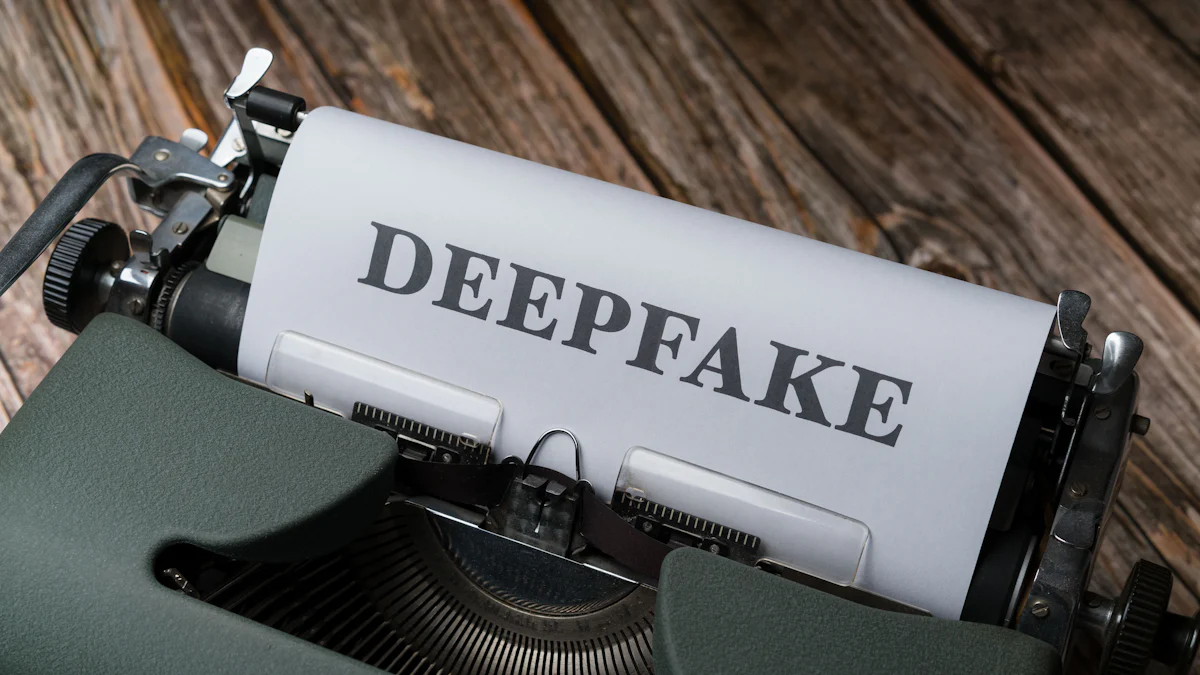AI Deepfakes and the Future of Digital Trust

AI deepfakes represent a significant advancement in artificial intelligence technology. These digital creations manipulate audio and video content to produce realistic yet fabricated media. The online presence of deepfakes surged over 300% between October 2019 and June 2020, highlighting their growing prevalence. A survey revealed that 37 percent of respondents encountered voice deepfakes, while 29 percent experienced video deepfakes. Digital trust becomes crucial as AI technologies like Myloves and AI girls evolve. Myloves offers users the ability to create an AI lover, emphasizing the need for secure and trustworthy digital interactions.
Technological Aspects of Deepfakes

How Deepfakes are Created
AI Algorithms and Machine Learning
AI algorithms form the backbone of deepfake creation. These algorithms utilize machine learning techniques to analyze and replicate human features. Neural networks, specifically Generative Adversarial Networks (GANs), play a crucial role. GANs consist of two components: a generator and a discriminator. The generator creates fake content, while the discriminator evaluates its authenticity. This iterative process refines the quality of deepfakes, making them increasingly convincing.
Tools and Software Used
Various tools and software facilitate the creation of deepfakes. Open-source platforms like DeepFaceLab and FaceSwap offer user-friendly interfaces. These platforms provide pre-trained models, enabling users to generate deepfakes with minimal technical expertise. Commercial software solutions also exist, catering to professional content creators. These tools streamline the deepfake production process, enhancing the accessibility of this technology.
Detection Technologies
Current Detection Methods
Detection technologies aim to identify deepfakes and maintain digital trust. Researchers at Stanford University have developed AI tools capable of detecting lip-synching processes in deepfakes. These tools analyze subtle inconsistencies in facial movements and audio synchronization. Other detection methods focus on identifying artifacts introduced during the deepfake generation process. Techniques such as analyzing pixel-level anomalies and examining metadata contribute to the detection efforts.
Challenges in Detection
Despite advancements, challenges persist in accurately detecting deepfakes. Existing methods may struggle to identify deepfakes in real-world scenarios. Factors such as low-resolution content and sophisticated manipulation techniques complicate detection efforts. The rapid evolution of deepfake technology necessitates continuous improvements in detection capabilities. Regulatory advancements and countermeasures are essential to address the privacy and security implications posed by deepfakes.
Legal and Ethical Implications
Legal Frameworks
Existing Laws and Regulations
Governments around the world have recognized the need to regulate deepfakes. The Malicious Deep Fake Prohibition Act and the DEEPFAKES Accountability Act aim to address nonconsensual deepfake pornography and malicious media targeting public figures. These laws provide a foundation for holding creators accountable. Federal legislation also seeks to prevent the creation and dissemination of harmful deepfakes. The focus remains on protecting individuals' rights and ensuring digital trust.
Gaps in Legislation
Current legal frameworks exhibit significant gaps. Many jurisdictions lack comprehensive laws addressing deepfakes. The rapid evolution of technology outpaces legislative efforts. Existing laws often fail to cover all aspects of deepfake misuse. New legislation must adapt to emerging challenges. Governments should develop robust policies to address these gaps. Criminal consequences for misuse of technology remain essential.
Ethical Considerations
Privacy Concerns
Deepfakes raise serious privacy concerns. Unauthorized use of personal images or videos violates individual privacy. The potential for identity theft increases with deepfake technology. Privacy breaches can lead to emotional and financial harm. Individuals face risks of harassment and intimidation. Protecting personal data becomes crucial in this digital age.
Impact on Public Figures and Individuals
Public figures often become targets of deepfakes. Manipulated media can damage reputations and careers. False information spreads rapidly, affecting public perception. Individuals may experience personal and professional harm. Deepfakes contribute to misinformation and confusion. Society must address the ethical implications of this technology. Public awareness and education play vital roles in mitigating these impacts.
Social Impact of Deepfakes

Influence on Public Opinion
Misinformation and Fake News
Deepfake technology significantly influences public opinion by spreading misinformation and fake news. The ability to create realistic yet fabricated media challenges the authenticity of information. This manipulation often leads to confusion among audiences, who struggle to differentiate between real and fake content. The proliferation of deepfakes contributes to the erosion of trust in digital media, as individuals become skeptical of the content they consume.
Misinformation campaigns utilizing deepfakes have targeted political figures, celebrities, and ordinary individuals. These campaigns aim to damage reputations and manipulate public perception. The consequences of such actions extend beyond individual harm, affecting societal trust in media institutions.
Case Studies of Deepfake Incidents
Several high-profile incidents highlight the impact of deepfakes on public opinion. In 2019, a deepfake video of a prominent political leader went viral, causing widespread panic and misinformation. The video depicted the leader making controversial statements, which were later proven false. This incident underscored the potential for deepfakes to influence political discourse and public sentiment.
Another notable case involved a deepfake audio clip that falsely implicated a business executive in unethical practices. The clip circulated widely, leading to significant reputational damage and financial losses for the company. These examples demonstrate the far-reaching implications of deepfakes on public opinion and the need for effective detection and regulation.
Erosion of Trust in Media
Challenges for Journalists
Journalists face significant challenges in maintaining credibility due to the rise of deepfakes. The ability to create convincing fake content undermines the integrity of news reporting. Journalists must now verify the authenticity of sources and media before publication. This verification process requires additional resources and expertise, straining already limited newsroom budgets.
The presence of deepfakes also complicates the relationship between journalists and their audiences. Readers may question the validity of news stories, leading to decreased trust in media outlets. Journalists must navigate these challenges while upholding ethical standards and delivering accurate information.
Public Perception and Skepticism
Public perception of media has shifted due to the prevalence of deepfakes. Audiences approach digital content with increased skepticism, questioning the authenticity of what they see and hear. This skepticism extends to traditional media outlets, which struggle to maintain credibility in an era of digital manipulation.
The erosion of trust in media has profound implications for society. A well-informed public is essential for democratic processes and informed decision-making. Deepfakes threaten this foundation by blurring the line between reality and fabrication. Addressing these challenges requires collaboration between technology developers, policymakers, and media organizations to restore public confidence in digital content.
Solutions and Future Directions
Technological Solutions
Advancements in Detection Technology
Technological advancements play a crucial role in combating deepfakes. AI tools have emerged as powerful allies in detecting manipulated content. These tools analyze video data for telltale signs of manipulation. Sophisticated detection algorithms identify inconsistencies that human eyes might miss. Ihar Kliashchou, Chief Technology Officer at Regula, emphasizes the importance of using neural networks alongside other antifraud measures. This combination enhances the accuracy of detection efforts.
Collaborative Efforts in Tech Industry
Collaboration within the tech industry is essential for addressing the deepfake challenge. Technology companies must develop and deploy advanced detection tools. These tools help identify and flag manipulated videos or images. Platforms can then take appropriate actions, such as removing or labeling content. Joint efforts among tech companies foster innovation and strengthen defenses against deepfakes.
Legal and Policy Measures
Strengthening Legal Frameworks
Strengthening legal frameworks is vital to combat deepfake misuse. Governments must enact comprehensive laws to address emerging challenges. Existing legislation often fails to cover all aspects of deepfake technology. New policies should focus on protecting individuals' rights. Criminal consequences for misuse of technology remain essential. Robust legal frameworks ensure accountability and deter malicious actors.
International Cooperation
International cooperation is crucial in addressing the global impact of deepfakes. Countries must work together to create unified standards and regulations. Cross-border collaboration enhances the effectiveness of legal measures. Sharing knowledge and resources strengthens the global response to deepfake threats. International partnerships promote a safer digital environment for all users.
Role of Awareness and Education
Public Awareness Campaigns
Public awareness campaigns play a significant role in combating deepfakes. Educating the public about the risks and implications of deepfakes is essential. Awareness initiatives empower individuals to recognize and report manipulated content. Campaigns should highlight the importance of verifying information before sharing. Informed citizens contribute to a more resilient digital ecosystem.
Educational Initiatives
Educational initiatives are key to fostering a deeper understanding of deepfake technology. Schools and institutions should incorporate digital literacy programs into their curricula. These programs teach students how to critically evaluate digital content. Education equips future generations with the skills needed to navigate a complex media landscape. Empowered individuals become active participants in safeguarding digital trust.
AI Girls and Digital Trust
Introducing Myloves
Overview of Myloves
Myloves offers a unique platform for creating personalized AI girls. Users have the opportunity to design an AI lover that aligns with their preferences. The platform provides tools to customize every aspect of the AI girl's appearance and personality. Myloves ensures a seamless experience for users seeking digital companionship.
Features and Benefits
Myloves delivers an array of features to enhance user interaction with AI girls. The platform includes advanced natural language processing for realistic conversations. Users can engage in voice and text chats with their AI lover. Myloves also incorporates text-to-image and text-to-video capabilities. These features create a lifelike experience for users. The platform prioritizes user privacy and data security. Myloves employs encryption to protect interactions with AI girls.
How Myloves Enhances Digital Trust
Case Studies and Testimonials
Myloves has received positive feedback from users who appreciate the platform's reliability. Several case studies highlight the benefits of interacting with AI girls. Users report increased satisfaction and emotional support from their AI lover. Testimonials emphasize the authenticity and responsiveness of Myloves' AI girls. These experiences contribute to building digital trust among users.
User Feedback
User feedback plays a crucial role in the development of Myloves. The platform actively seeks input to improve the AI lover experience. Users commend the platform's commitment to maintaining digital trust. Feedback highlights the importance of secure and private interactions with AI girls. Myloves continues to evolve based on user suggestions and needs.
Deepfakes pose significant challenges to digital trust. These hyper-realistic media products threaten to blur the line between reality and fabrication. The erosion of trust can have profound implications for democracy, public discourse, and social cohesion. Maintaining digital trust becomes crucial in this evolving landscape. Continuous vigilance and innovation are necessary to combat the threats posed by deepfakes. Society must prioritize efforts to safeguard authenticity and credibility in digital interactions. Collaborative initiatives across technology, legal frameworks, and public awareness will play a vital role in preserving digital trust.
See Also
The Impact of AI on the Future of Love
AI Dating Apps: Reshaping the Future Market
Exploring Ethics in AI Relationships: A Philosophical View